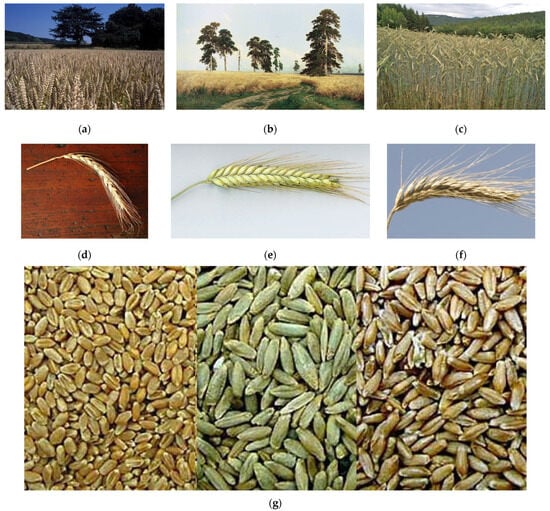Triticale, a hybrid of wheat and rye, is one of the most promising grain crops. In terms of productivity, the level of metabolizable energy, and the composition of essential amino acids, triticale surpasses rye and is not inferior to wheat. It is resistant to the most dangerous diseases and pests. In terms of nutritional value, triticale can compete with wheat, corn, sorghum, and barley. The presence, however, of antinutrients in triticale such as non-starch polysaccharides, alkylresorcinols, and trypsin inhibitors significantly reduces the biological value of this crop. In the global practice of compound feed production, there are many methods and technologies for processing grain raw materials to increase their nutritional value. Enzymatic treatment and extrusion technologies are worthy of special attention. The high content of triticale in the compound feed of poultry breeder flocks should be used effectively, taking into account the characteristics of triticale varieties and climatic conditions. An optimal triticale level in feed (15% for layer and broiler chicks) may improve body weight gain and reduce feed costs when raising replacement young stock. Layer breeder flocks fed a 20% triticale-based diet may have increased egg production, high viability, and flock uniformity. Producing triticale–soy and triticale–sunflower extrudates and supplementing the diet of poultry flocks with essential amino acids represent promising avenues for maximizing the benefits of triticale. Innovative methods of achieving this goal should be further developed and put into practice, particularly given the expansion of triticale’s cultivation areas.
Poultry producers consistently face the challenges of increasing flock productivity and reducing production costs. Additional issues to be kept in mind include disease control (with a minimum use of antibiotics) for both animals and food crops, animal welfare, and environmental concerns. Balanced feeding plays one of the most crucial roles in poultry production. It needs to meet all the needs of the bird in accordance with age and productivity, providing a diet consisting of the required content of basic nutrients, energy, and biologically active substances including, proteins, amino acids, and carbohydrates [
1,
2,
3,
4,
5,
6,
7,
8,
9,
10,
11,
12,
13,
14,
15]. Moreover, in order to expand the fodder base in the worldwide poultry industry, the sustained expansion of the harvesting area of cereal crops that are more resistant to climate change is essential [
16,
17,
18].
Cereals are the main component of poultry feed. Conventionally, corn and wheat are most widely used for this purpose. Barley is utilized to a lesser extent, with rye and oats in smaller quantities. In recent years, the share of traditional cereals in compound feed for poultry has lowered in developed countries from 69–70% to 40–50%. This is due to both secondary ingredients of industrial processing and non-traditional feeds [
16,
19]. Alongside these conventional components, new cereal crops have appeared in poultry diets [
20,
21,
22,
23], such as sorghum and triticale (×
Triticosecale Wittmack) (
Figure 1). The latter is a promising crop and, with its rational use, can be a valuable compound feed ingredient and successfully partially replace the cereal crops traditionally used [
17,
23,
24,
25,
26,
27,
28,
29,
30,
31]. This becomes especially important in connection with the growing share of cereals that will be used for the production of biofuels, i.e., ethanol, biodiesel, and solid fuel pellets (e.g., [
32,
33,
34,
35]). The purpose of this review is to consider the nutritional, economic, and environmental benefits (as well as the drawbacks) of the rye–wheat hybrid triticale in poultry production.
Figure 1. Phenotypes of wheat (
Triticum aestivum; left), rye (
Secale cereale; middle), and their hybrid, triticale (right): (
a–
c) cultivation fields; (
d–
f) single ears; and (
g) seeds. Image sources: (
a)
https://commons.wikimedia.org/wiki/File:Parcelle_De_bl%C3%A9_REGAIN_(Yvelynes)_Cl_J_Weber_(23787338000).jpg, CC-BY-2.0 (accessed on 10 February 2024); (
b)
https://commons.wikimedia.org/wiki/File:Rozh.jpg, Ivan Shishkin (1878), CC-PD-Mark (accessed on 10 February 2024); (
c)
https://commons.wikimedia.org/wiki/File:Triticalefeld.jpg, CC-BY-SA-3.0 (accessed on 10 February 2024); (
d)
https://commons.wikimedia.org/wiki/File:Frumento_Tenero_Rieti.jpg, CC-BY-3.0 (accessed on 10 February 2024); (
e)
https://commons.wikimedia.org/wiki/File:Secale_cereale_(Roggen)-2008b.jpg, CC-BY-SA-3.0,2.5,2.0,1.0 (accessed on 10 February 2024); (
f)
https://commons.wikimedia.org/wiki/File:LPCC-623-Espiga_de_triticale.jpg, CC-BY-SA-3.0 (accessed on 10 February 2024); and (
g)
https://commons.wikimedia.org/wiki/File:Wheat,_rye,_triticale_montage.jpg, PD USDA (accessed on 10 February 2024).
This entry is adapted from the peer-reviewed paper 10.3390/encyclopedia4010027

